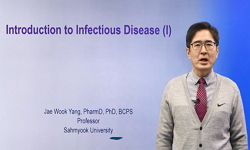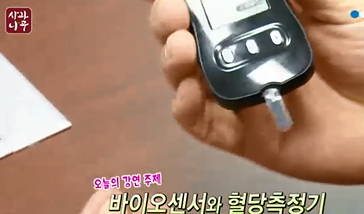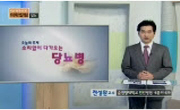Study Design: Retrospective study. Objectives: To identify risk factors for infection after spinal surgery. Summary of the Literature Review: Infection after spinal surgery is relatively uncommon. However, such infections cause serious consequences an...
http://chineseinput.net/에서 pinyin(병음)방식으로 중국어를 변환할 수 있습니다.
변환된 중국어를 복사하여 사용하시면 됩니다.
- 中文 을 입력하시려면 zhongwen을 입력하시고 space를누르시면됩니다.
- 北京 을 입력하시려면 beijing을 입력하시고 space를 누르시면 됩니다.

척추 수술 후 감염에 대한 위험인자: 당뇨병을 중심으로 = Risk Factors for Wound Infection in Spinal Surgery: A Focus on Diabetes Mellitus
한글로보기https://www.riss.kr/link?id=A105909547
- 저자
- 발행기관
- 학술지명
- 권호사항
-
발행연도
2018
-
작성언어
Korean
-
주제어
척추 수술 ; 위험인자 ; 감염 ; 당뇨병 ; Spinal surgery ; Risk factor ; Infection ; Diabetes mellitus
-
등재정보
KCI등재
-
자료형태
학술저널
- 발행기관 URL
-
수록면
115-121(7쪽)
-
KCI 피인용횟수
0
- 제공처
- 소장기관
-
0
상세조회 -
0
다운로드
부가정보
다국어 초록 (Multilingual Abstract)
Study Design: Retrospective study.
Objectives: To identify risk factors for infection after spinal surgery.
Summary of the Literature Review: Infection after spinal surgery is relatively uncommon. However, such infections cause serious consequences and increased costs and sequelae. Risk factors for infection after spinal surgery include a posterior approach, instrumentation, the use of an allogenic bone graft, transfusion, and a long operating time. Patient-related factors include diabetes and obesity.
Materials and Methods: From January 2009 to December 2013, 350 patients who underwent surgery at our hospital due to spinal disease, including 10 patients with a postoperative spinal infection, were evaluated. We investigated patients’ age, gender, morbidity due to diabetes mellitus, body mass index, level of surgery, approach, location, instrumentation, and operation type.
Results: Ten of the 350 patients developed a spinal infection after surgery. The proportion of diabetic patients among the infected patients was higher than among the non-infected patients, although the difference was not statistically significant. Additionally, the proportion of diabetic patients with hemoglobin A1c levels greater than 7.0% was higher among the infected patients. Operating time, the surgical approach, drain tube insertion, transfusion, and the use of an allogenic bone graft were not significantly different between the infected and non-infected patient groups.
Conclusions: Uncontrolled diabetes is the most important risk factor for the development of spinal infection after surgery. Therefore, in order to prevent infection after surgery, blood glucose should be controlled before surgery.
국문 초록 (Abstract)
연구 계획: 후향적 연구. 목적: 척추 수술 후 발생 가능한 감염에 대한 위험 인자의 규명. 선행 연구문헌의 요약: 척추 수술 후 감염은 비교적 흔하지 않으나 한번 발생하면 심각한 결과 및 비...
연구 계획: 후향적 연구.
목적: 척추 수술 후 발생 가능한 감염에 대한 위험 인자의 규명.
선행 연구문헌의 요약: 척추 수술 후 감염은 비교적 흔하지 않으나 한번 발생하면 심각한 결과 및 비용의 증가와 후유증이 발생한다. 척추 수술 후 감염발생의 위험 인자로는 후방 접근술, 기기 사용, 동종골 이식, 수혈, 긴 수술 시간이 알려져 있으며, 환자 측 요인으로 당뇨, 비만 등이 있다.
대상 및 방법: 2009년 1월부터 2013년 12월까지 본원 정형외과에서 척추 질환으로 수술을 시행한 환자들을 조사하였으며 심부 감염으로 진단받은 10 명과 감염 소견이 없었던 환자들에 대해 비교 분석을 시행하였다. 본 연구에서는 수술 당시 환자들의 당뇨 이환 여부, 성별, 체질량 지수, 수술 범위, 수술접근 방법, 수술 부위, 기기 사용 여부, 수술 방법에 대해 조사하였다.
결과: 5년간 척추 수술을 시행하였던 환자 중 추시 관찰이 가능하였던 350명의 환자를 대상으로 하였으며, 그 중 10명의 척추 감염 사례가 발생하였다.
감염 군에서 당뇨 환자의 비율은 비감염군에 비해 높았으나 통계적으로 유의한 차이를 보이지는 않았다. 그러나 당뇨 환자에서 시행한 혈색소 수치가7.0% 이상인 환자 비율이 감염 군에서 높게 나타났다. 수술시간, 수술 접근법, 배액관 삽입 여부, 수혈 여부, 동종골 이식술 시행 여부는 감염군과 비감염군에 따른 차이를 보이지 않았다.
결론: 조절되지 않는 당뇨는 척추 수술 후 감염 발생에 있어서 가장 중요한 위험 인자로 생각된다. 따라서, 수술 후 감염 예방을 위해 수술 전 환자의 혈당조절을 해야 한다.
약칭 제목: 당뇨병과 척추 수술 후 감염 간의 관계
참고문헌 (Reference)
1 장호진, "정형외과 수술에서 외과적 손 씻기의 효과" 대한정형외과학회 49 (49): 36-42, 2014
2 안동기, "감염의 형태와 위험인자에 근거한 후방 척추 유합술 후 감염의 예방법" 대한척추외과학회 16 (16): 274-284, 2009
3 Lonstein J, "Wound infection with Harrington instrumentation and spine fusion for scoliosis" (96) : 222-233, 1973
4 Schuster JM, "The influence of perioperative risk factors and therapeutic interventions on infection rates after spine surgery: a systematic review" 35 (35): S125-S137, 1976
5 Collins I, "The diagnosis and management of infection following instrumented spinal fusion" 17 (17): 445-450, 2008
6 Kanafani ZA, "Surgical site infections following spinal surgery at a tertiary care center in Lebanon: incidence, microbiology, and risk factors" 38 (38): 589-592, 2006
7 Brown EM, "Spine update: prevention of postoperative infection in patients undergoing spinal surgery" 29 (29): 938-945, 1976
8 Ho C, "Risk factors for the development of delayed infections following posterior spinal fusion and instrumentation in adolescent idiopathic scoliosis patients" 32 (32): 2272-2277, 1976
9 Olsen MA, "Risk factors for surgical site infection in spinal surgery" 98 (98): 149-155, 2003
10 Olsen MA, "Risk factors for surgical site infection following orthopaedic spinal operations" 90 (90): 62-69, 2008
1 장호진, "정형외과 수술에서 외과적 손 씻기의 효과" 대한정형외과학회 49 (49): 36-42, 2014
2 안동기, "감염의 형태와 위험인자에 근거한 후방 척추 유합술 후 감염의 예방법" 대한척추외과학회 16 (16): 274-284, 2009
3 Lonstein J, "Wound infection with Harrington instrumentation and spine fusion for scoliosis" (96) : 222-233, 1973
4 Schuster JM, "The influence of perioperative risk factors and therapeutic interventions on infection rates after spine surgery: a systematic review" 35 (35): S125-S137, 1976
5 Collins I, "The diagnosis and management of infection following instrumented spinal fusion" 17 (17): 445-450, 2008
6 Kanafani ZA, "Surgical site infections following spinal surgery at a tertiary care center in Lebanon: incidence, microbiology, and risk factors" 38 (38): 589-592, 2006
7 Brown EM, "Spine update: prevention of postoperative infection in patients undergoing spinal surgery" 29 (29): 938-945, 1976
8 Ho C, "Risk factors for the development of delayed infections following posterior spinal fusion and instrumentation in adolescent idiopathic scoliosis patients" 32 (32): 2272-2277, 1976
9 Olsen MA, "Risk factors for surgical site infection in spinal surgery" 98 (98): 149-155, 2003
10 Olsen MA, "Risk factors for surgical site infection following orthopaedic spinal operations" 90 (90): 62-69, 2008
11 Friedman ND, "Risk factors for surgical site infection complicating laminectomy" 28 (28): 1060-1065, 2007
12 Fang A, "Risk factors for infection after spinal surgery" 30 (30): 1460-1465, 1976
13 Klekamp J, "Risk factors associated with methicillin-resistant staphylococcal wound infection after spinal surgery" 12 (12): 187-191, 1999
14 Haridas M, "Predictive factors for surgical site infection in general surgery" 144 (144): 496-501, 2008
15 Liao JC, "Postoperative wound infection rates after posterior instrumented spinal surgery in diabetic patients" 29 (29): 480-485, 2006
16 Kasliwal MK, "Infection with spinal instrumentation: Review of pathogenesis, diagnosis, prevention, and management" 4 (4): 392-403, 2013
17 Keller RB, "Infection after spinal fusion using internal fixation instrumentation" 3 (3): 99-111, 1972
18 Delamaire M, "Impaired leucocyte functions in diabetic patients" 14 (14): 29-34, 1997
19 Bagdade JD, "Impaired granulocyte adherence. A reversible defect in host defense in patients with poorly controlled diabetes" 27 (27): 677-681, 1978
20 Hikata T, "High preoperative hemoglobin A1c is a risk factor for surgical site infection after posterior thoracic and lumbar spinal instrumentation surgery" 19 (19): 223-228, 2014
21 Kanayama M, "Effective prevention of surgical site infection using a Centers for Disease Control and Prevention guideline-based antimicrobial prophylaxis in lumbar spine surgery" 6 (6): 327-329, 2007
22 Laing P, "Diabetic foot ulcers" 167 (167): 31-36, 1994
23 Moe JH, "Complications of scoliosis treatment" 53 : 21-30, 1967
24 Prothero SR, "Complications after low-back fusion in 1000 patients: A comparison of two series one decade apart" 48 : 57-65, 1966
25 Owens BD, "Comparison of irrigation solutions and devices in a contaminated musculoskeletal wound survival model" 91 (91): 92-98, 2009
26 Mowat A, "Chemotaxis of polymorphonuclear leukocytes from patients with diabetes mellitus" 284 (284): 621-627, 1971
27 Sima AA, "Bacterial phagocytosis and intracellular killing by alveolar macrophages in BB rats" 37 (37): 544-549, 1988
28 Twigg SM, "Advanced glycosylation end products up-regulate connective tissue growth factor (insulin-like growth factor-binding protein-related protein 2) in human fibroblasts: a potential mechanism for expansion of extracellular matrix in diabetes mellitus" 142 (142): 1760-1769, 2001
동일학술지(권/호) 다른 논문
-
근력 운동 후 발생한 급성 요추부 척추 주위 근육의 구획 증후군 - 증례 보고 -
- 대한척추외과학회
- 김기원
- 2018
- KCI등재
-
제 2경추증성 신경근증: 이학적 소견 및 영상촬영을 이용한 진단 및 현미경적 추간공 감압술을 통한 치료- 증례 보고 -
- 대한척추외과학회
- 정유훈
- 2018
- KCI등재
-
후방 척추 감압술을 시행한 척추관 협착증 환자에서 수술 후 통증조절 방법간의 효과 비교
- 대한척추외과학회
- 송우석
- 2018
- KCI등재
-
척추 마취 후 발생한 척추 지주막하 혈종 - 증례 보고 -
- 대한척추외과학회
- 신원식
- 2018
- KCI등재
분석정보
인용정보 인용지수 설명보기
학술지 이력
| 연월일 | 이력구분 | 이력상세 | 등재구분 |
|---|---|---|---|
| 2027 | 평가예정 | 재인증평가 신청대상 (재인증) | |
| 2021-01-01 | 평가 | 등재학술지 유지 (재인증) |  |
| 2018-01-01 | 평가 | 등재학술지 선정 (계속평가) |  |
| 2017-12-01 | 평가 | 등재후보로 하락 (계속평가) |  |
| 2013-01-01 | 평가 | 등재 1차 FAIL (등재유지) |  |
| 2010-01-01 | 평가 | 등재학술지 선정 (등재후보2차) |  |
| 2009-01-01 | 평가 | 등재후보 1차 PASS (등재후보1차) |  |
| 2007-01-01 | 평가 | 등재후보학술지 선정 (신규평가) |  |
학술지 인용정보
| 기준연도 | WOS-KCI 통합IF(2년) | KCIF(2년) | KCIF(3년) |
|---|---|---|---|
| 2016 | 0.03 | 0.03 | 0.04 |
| KCIF(4년) | KCIF(5년) | 중심성지수(3년) | 즉시성지수 |
| 0.06 | 0.05 | 0.228 | 0 |





 KCI
KCI







